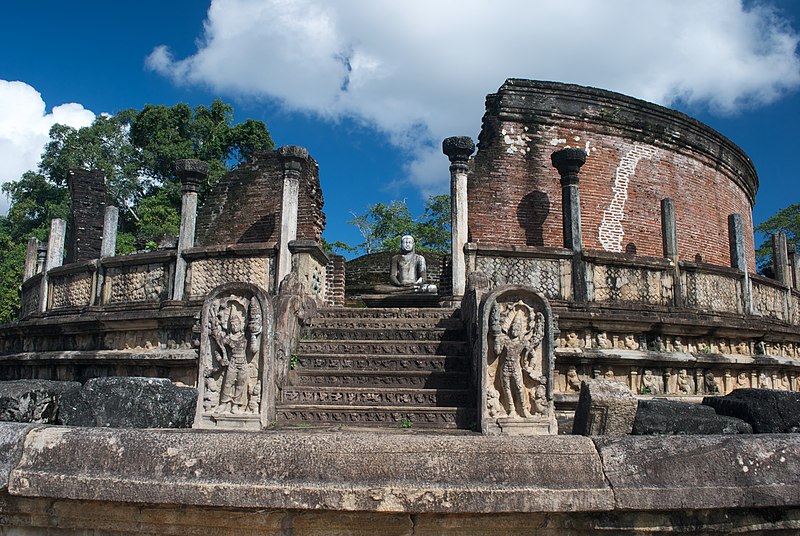The Ancient City of Polonnaruwa is one of Sri Lanka’s most historically significant cities and contains one of the country’s major historical kingdoms. It was once the capital city of King Vijayabahu I who reunified the land in 1070 through a triumphant victory over invading forces. Today the ancient city of Polonnaruwa contains well-preserved ruins that speak to its ancient magnificence and is now a UNESCO World Heritage Site. Here are some key facts to know for those visiting this historical town.
Location
The Ancient city can be found in the modern-day town of Polonnaruwa which is located in Sri Lanka’s north central province. The region features several tropical forests and national forests and has a unique rural feel. The town is located just under 60 kilometres from Sigirya, 137 kilometres to the northeast of Kandy, and 227 kilometres northeast of Colombo.
How to Get There
Polonnaruwa can be reached through several nearby cities and regions, either by bus, train or by personal vehicle.
Anuradhapura to Polonnaruwa: this route is best travelled by self-driving as it takes all of two and a half hours. There is no direct bus service along this route and will require at least two buses with the transfer happening in Dambulla.
Sigirya to Polonnaruwa: this route takes a little under one and a half hours by car, and has no direct bus route. Travelling by bus will require at least two buses and will take roughly two and a half hours.
Colombo to Polonnaruwa: direct bus rides and train rides are available on this route. A journey by direct bus will last around six and a half hours, while a train ride will take almost five hours. Travelling by car will take five and a half hours.
Dambulla to Polonnaruwa: there are multiple direct buses along this route with the journey taking around two hours. However, travelling by car will take a good 90 minutes.
An additional option is arranging a guided tour or visit to the ancient city through any of the experienced tour operators in the country such as Ceylon Tours.
Best Times to Visit
The best time of day to visit the ancient city is the morning before the temperatures begin to rise. Those looking to avoid warm temperatures will do well to visit in December and January which are the coolest months with temperatures at 29 degrees Celcius. January, July and August are when visitor numbers are highest, so those looking for a quieter experience will want to avoid visiting during these months.
Places to Visit
Image via Wikimedia Commons – Simon Frost, Polonnaruwa Vatadage, CC BY-SA 2.0
The ancient city of Polonnaruwa is filled with marvellous historical structures and buildings that are open for public viewing. Here are a few standout places that are definitely worth visiting.
The Royal Palace of King Parakramabahu: this grand royal palace once held 1000 chambers across seven stories. Of these only 55 halls and three floors remain, but still convey a sense of the imperial grandeur that it once held. Tourists can visit the Royal Bath outside the citadel and the Council Chamber of King Parakramabahu.
Polonaruwa Vatadage: Originally constructed to protect the tooth relic of the Buddha, this structure stands as a typical example of a Sri Lankan vatadage. Despite no longer having its upper structure, the vatadage still contains four impressively carved Buddhist statues, each 5 feet tall and facing the four cardinal directions
Rankoth Vehera: This is the 4th largest stupa in the country with an initial circumference of 200 metres. It was built by King Nissanka Malla and has four entrances at the four cardinal points, each with sandy paths leading to them. It is one of the most popular places to visit in Polonnaruwa, with tourists engaging in various rituals and activities at the temple.
Gal Viharaya: This is a rock temple of the Buddha and the most prominent of all temples built by King Parakramabahu. It features 4 rock statues, each portraying different figures of the Buddha. The first is of the Buddha seated on a lotus, the second is another smaller-sized seated figure, the third depicts a standing Buddha, and the fourth is a reclining figure.
